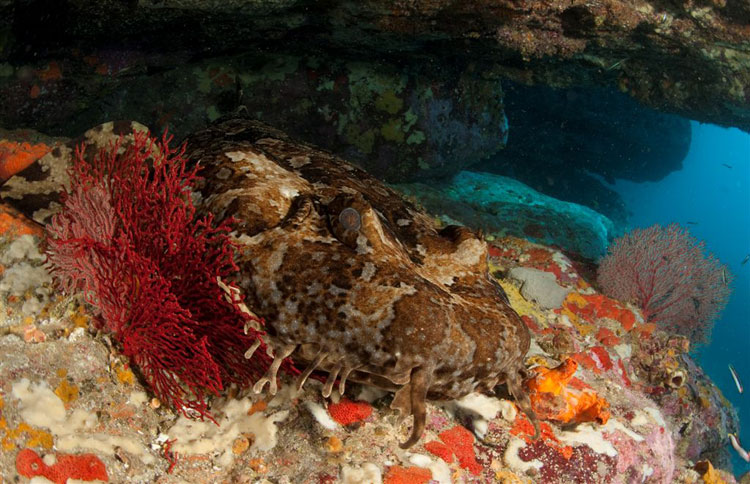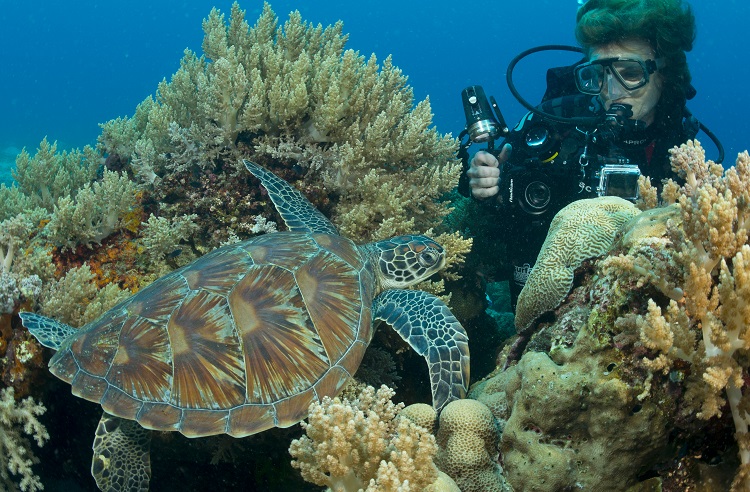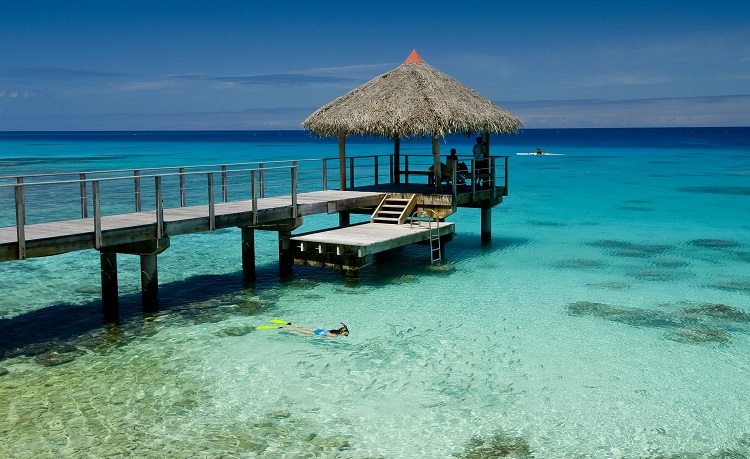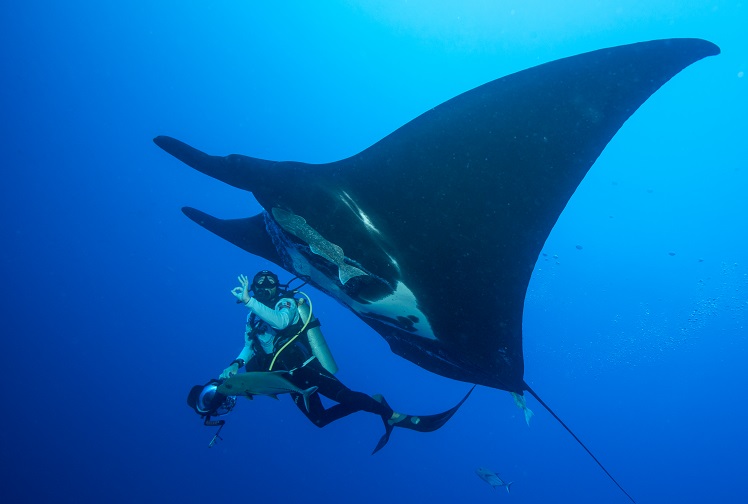Banded Wobbegong & Gorgonians
24-Aug-2011 Back to Image Gallery
Aztec City Wall at Bowen Island has a long horizontal crack some 5 meters off the seafloor that provides an excellent apartment for resting wobbegong sharks. Concealed within this cave they can observe their domain by day and depart to feed and possibly mate by night. Easter weekend 2011 brought excellent diving conditions to NSW and as I was cruising along the wall I discovered this large wobbegong shark had settled with its face among the vibrant red gorgonian fans that are also a feature of NSW South Coast dive sites. It was an irresistible photo opportunity that demanded a slight risk, I was counting on the animal tolerating my large camera system a mere 20 centimetres from its face while I took a series of close ups! Fortunately my careful approach and minimal movement while making camera adjustments paid off. I then offered my photo student the opportunity to replicate my image with her camera but a vigorous shaking of her head indicated she was certainly not interested.
Photo Data: Location: Aztec City Wall, Bowen Island, Jervis Bay, NSW, Australia. Genre: Wide Angle Macro. Photo Data: Nikon D200, Nikkor 10.5mm lens + 1.4 Tele-converter, Seacam Housing, Dual Seacam Strobes, Manual Exposure Mode. ISO 100 Exposure f8 @ 1/15sec. Image by Kevin Deacon.
Photo Hints: Good framing and camera angle was crucial to this image. As I desired the blue water background I needed to squeeze into the cave to get the angle I wanted. Also wobbegongs are rather flat so contrary to the popular rule of shooting upward angles this subject required a slight downward angle. Since the cave was narrow my strobe arms needed careful adjustment to avoid the cave roof yet still light the subject. Large magnified viewfinders on your housing are the key to framing correctly to ensure all the elements in the picture are composed well. Finally it was important to remain very still so the shark was not disturbed and the picture wasn’t blurred due to the very slow (1/15th) shutter speed I needed to use to expose the blue water background correctly.
Interesting Facts: The Banded Wobbegong, sometimes called Ornate Wobbegong, Orectolobus ornatus, like its cousin the Spotted Wobbegong grow to nearly 2.5 meters and can inflict a nasty bite. They are known to do so if they are molested. Seven species were known to exist but this has recently increased to eight since the small wobbegongs we encounter at Port Stephens have been identified as a new species, not simply juvenile banded wobbegongs as we once thought. All but one species are unique to Australian waters.



